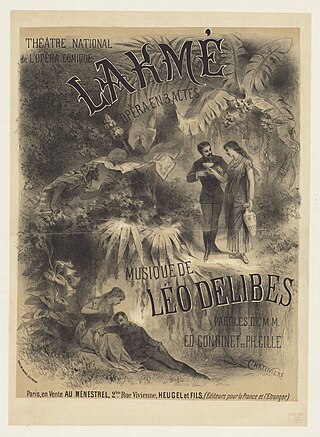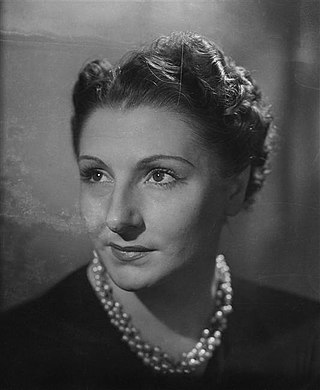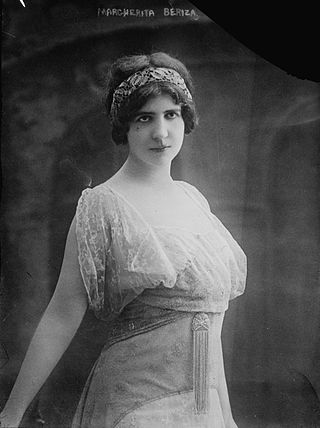
Marie van Zandt (October 8, 1858 – December 31, 1919) was an American dramatic soprano.

Marie van Zandt (October 8, 1858 – December 31, 1919) was an American dramatic soprano.

Born in New York City, van Zandt was the daughter of Jennie van Zandt, who had sung at La Scala and at New York's Academy of Music. She studied in Milan with Francesco Lamperti, making her debut as Zerlina in Don Giovanni in Turin in 1879.
Successful appearances followed her debut, including at Covent Garden in 1879. However, at that time, it was necessary to make official debuts in Paris. So she left for Paris in 1880 where her mother, who had acquaintances in Parisian high society, managed to introduce her daughter to professionals.
Van Zandt, who was only 21, signed a contract with the Opéra-Comique in 1880, making her debut as Mignon . Léo Delibes composed his opera Lakmé for her, and she created the title role for its world premiere in 1883, with Elisa Frandin playing Malika. Organized opposition at the Opéra-Comique was created at around this time in an attempt to discredit her; among the false accusations [1] that were circulated was one suggesting that she appeared onstage while drunk. Nevertheless, she assumed a successful career, and the Parisian beau monde praised her, as for example Baron Alphonse de Rothschild who used to reserve loges for his family and friends when she appeared on stage. She travelled all around Europe for tours.
![Marie van Zandt, [ca. 1859-1870]. Carte de Visite Collection, Boston Public Library. Marie van Zandt - DPLA - ee9434eaa6216a19859173e1bc907cc4 (page 1).jpg](http://upload.wikimedia.org/wikipedia/commons/thumb/1/18/Marie_van_Zandt_-_DPLA_-_ee9434eaa6216a19859173e1bc907cc4_%28page_1%29.jpg/220px-Marie_van_Zandt_-_DPLA_-_ee9434eaa6216a19859173e1bc907cc4_%28page_1%29.jpg)
Van Zandt made her Metropolitan Opera debut as Amina in Vincenzo Bellini's La sonnambula on December 21, 1891, remaining with the company for only one season. She returned to the Opéra-Comique in 1896 and revived some of her earlier success there, including Lakmé to huge enthusiasm in 1896, and Zerlina and Mignon in 1897. It was reported that she would be appearing in March 1897 in the premiere of Massenet's Cendrillon. [2] She was a good friend of Jules Massenet and used to sing for Parisian aristocratic salons, for example at Mme Lemaire's hôtel particulier, where Massenet, Marcel Proust, Countess Greffulhe, Camille Saint-Saëns, Reynaldo Hahn, etc. were frequent guests. [3]
She married a Russian Count and went into retirement, staying in France.
Van Zandt died in Cannes in 1919 at age 61. Her ashes are at the Père Lachaise Cemetery in Paris.

Lakmé is an opera in three acts by Léo Delibes to a French libretto by Edmond Gondinet and Philippe Gille.

Reynaldo Hahn de Echenagucia was a Venezuelan-born French composer, conductor, music critic, and singer. He is best known for his songs – mélodies – of which he wrote more than 100.

Emma Calvé, born Rosa Emma Calvet was a French operatic dramatic soprano.

Georgette Leblanc was a French operatic soprano, actress, author, and the sister of novelist Maurice Leblanc. She became particularly associated with the works of Jules Massenet and was an admired interpreter of the title role in Bizet's Carmen.

Janine Micheau was a French operatic soprano, one of the leading sopranos of her era in France, particularly associated with lyric soprano and coloratura soprano repertory.

Jules Danbé was a French violinist, composer and conductor, mainly of opera.

Blanche Deschamps-Jéhin was a French operatic contralto who had a prolific career in France from 1879-1905. She possessed a rich-toned and flexible voice that had a wide vocal range. She sang in numerous world premieres throughout her career, most notably originating the title role in Jules Massenet’s Hérodiade in 1881.
Cécile Simonnet was a French operatic soprano.

Mignon Nevada was an English operatic soprano. She was born in Paris, daughter of the American operatic soprano Emma Nevada and her English husband Raymond Palmer. She was named after the title character of the 1866 opera Mignon, written by her godfather, French composer Ambroise Thomas. Her voice was light and agile, and her mother trained her to be a coloratura soprano, although Sir Thomas Beecham thought this was a mistake and she should have been a mezzo-soprano instead.

Jeanne Granier was a French soprano, born and died in Paris, whose career was centred on the French capital.

Alice Verlet (1873–1934) was a Belgian-born operatic coloratura soprano active primarily in France. She sang principal roles at the operas in Lyon, Nice, and Monte Carlo; at His Majesty's Theater in London; at La Monnaie in Brussels; and at the Paris Opéra and Opéra-Comique. In the United States, although not entirely absent from the operatic stage, she was known primarily as a concert singer and was a featured singer on Edison records.

Marguerite Bériza was a French opera singer who had an active international career during the first half of the 20th century. She began her career as a mezzo-soprano at the Opéra-Comique in 1900; ultimately transitioning into the leading soprano repertoire at that theatre in 1912. She performed extensively in the United States from 1914–1917 and was also heard as a guest artist at theatres in the French provinces, Monaco, Portugal, and Switzerland during her career. In 1924 she founded her own opera company in Paris with whom she actively performed up until 1930.

Marie Renard was an Austrian operatic mezzo-soprano, later soprano.

Madeleine Lemaire, néeColl, was a French painter who specialized in elegant genre works and flowers. Robert de Montesquiou said she was The Empress of the Roses. She introduced Marcel Proust and Reynaldo Hahn to the Parisian salons of the aristocracy. She herself held a salon where she received high society in her hôtel particulier on the Rue de Monceau.

Eugène Louis Carpezat was an acclaimed French scenographer in the Belle Époque.

Émilie Gabrielle Adèle Ambre (néeAmbroise; was a French opera singer who performed leading soprano roles in Europe and North America and later became a singing teacher. Born in French Algeria and trained at the Marseilles Conservatory, she was for several years the mistress of William III of the Netherlands. She had a son Robert by her next lover Gaston de Beauplan, but the relationship eventually foundered after their return from the financially disastrous 1880–1881 American tour de Beauplan had organized to showcase her talents. Following her retirement from the stage in 1890, Ambre opened a singing school in Paris with the composer Emile Bouichère and married him in 1894. As a singer, she was particularly known for her performances as Violetta, Manon, and Aida, but is primarily remembered today as the subject of Édouard Manet's portrait of her as Carmen.

Marie Sophie Jeanne Laisné was a French operatic soprano with the Opéra-Comique. She started her career as Sophie in the first French production of Massenet's Werther, and went on to create the roles of Aurore in Jules Massenet's Le portrait de Manon, Jeanne in Benjamin Godard's La Vivandière, La Duchesse de Fronsac in Henri Hirschmann's L'amour à la Bastille, and Henriette in Ernest Lefèvre-Dérodé's Le follet. Other notable roles include Micaela in Bizet's Carmen and as Mimi in Puccini's La bohème.

Emma Vecla, birth name Ernestine Louise Telmat, alternate stage name Adrienne Telma, (1877–1972) was a French operatic soprano who was born in Maghnia, Algeria. She made her début at the Opéra-Comique in 1898 as Filina in Ambroise Thomas' Mignon. She is remembered in particular for her operetta performances from 1907 in Italy, where she became quite a celebrity.

Elisa Frandin was a Finnish-French opera singer.

Marguerite Vaillant-Couturier was a French soprano who made her debut in Brussels at La Monnaie in 1880 in the title role of Gounod's Mireille. After appearing in Marseille the following year, she sang in operettas in Paris in the early 1880s. On 19 October 1882, she created the role of Micaëla in Lecocq's Le cœur et la main at the Théâtre des Nouveautés in Paris. In 1888, she gained success in the title role of Bizet's Carmen at the Opéra-Comique. She also appeared in Buenos Aires and Saint Petersburg.